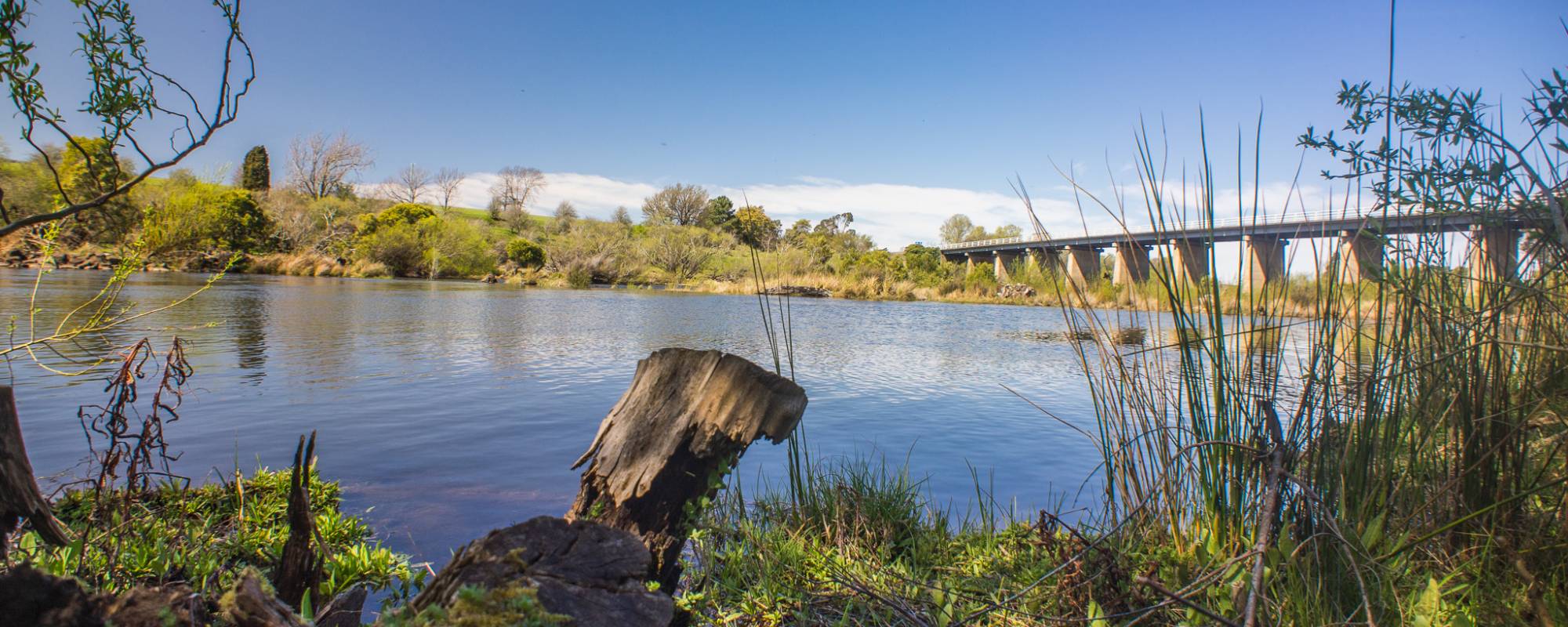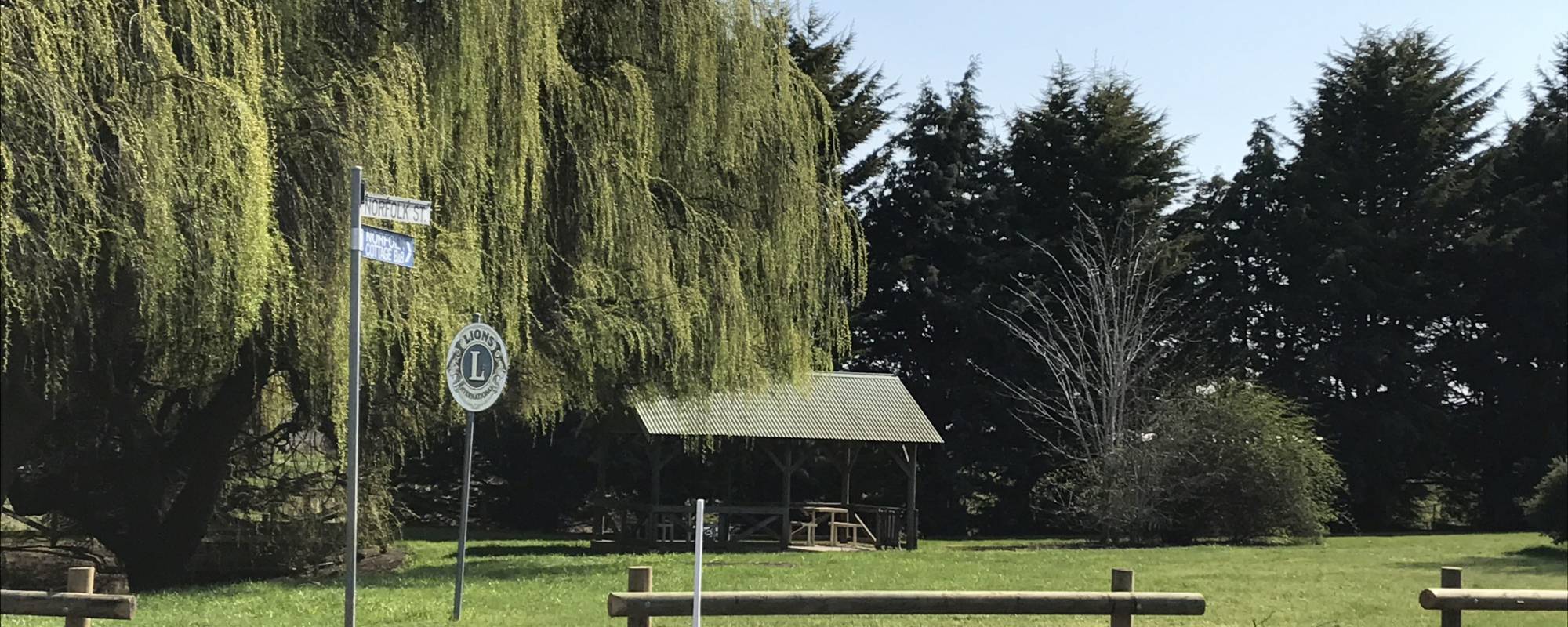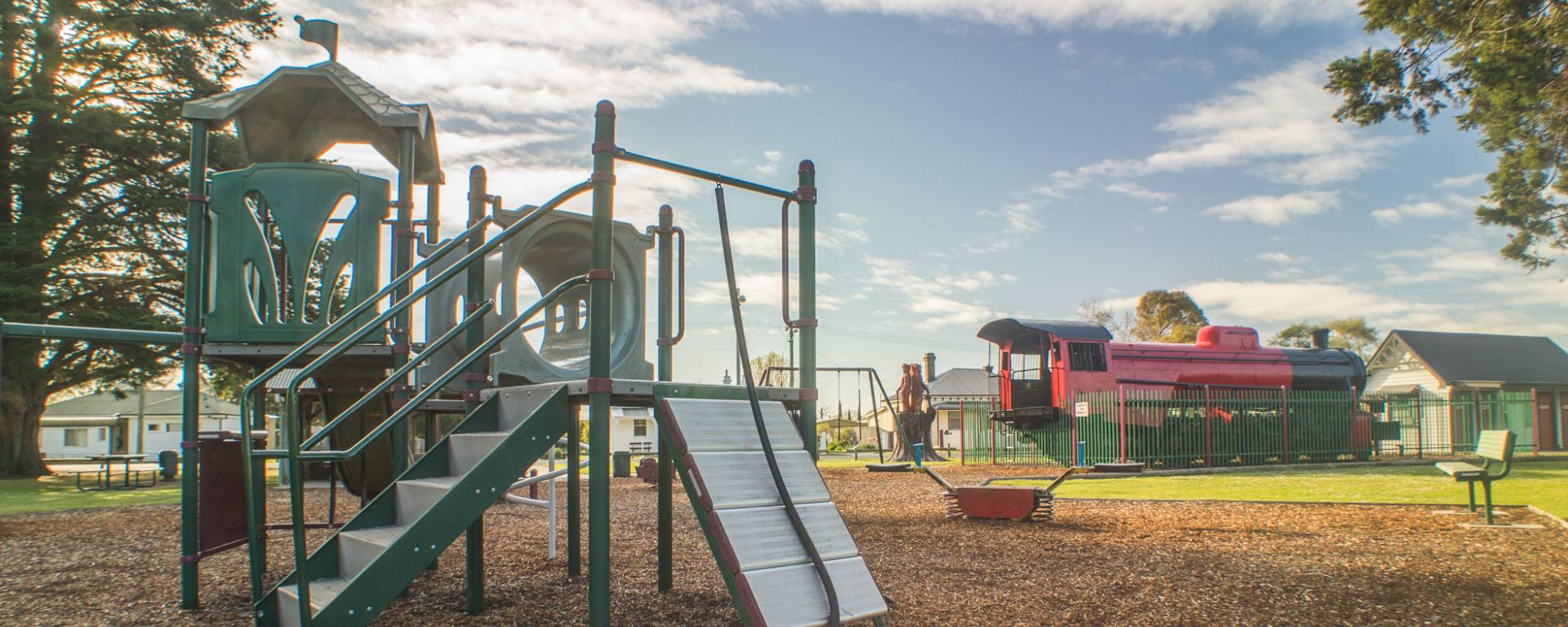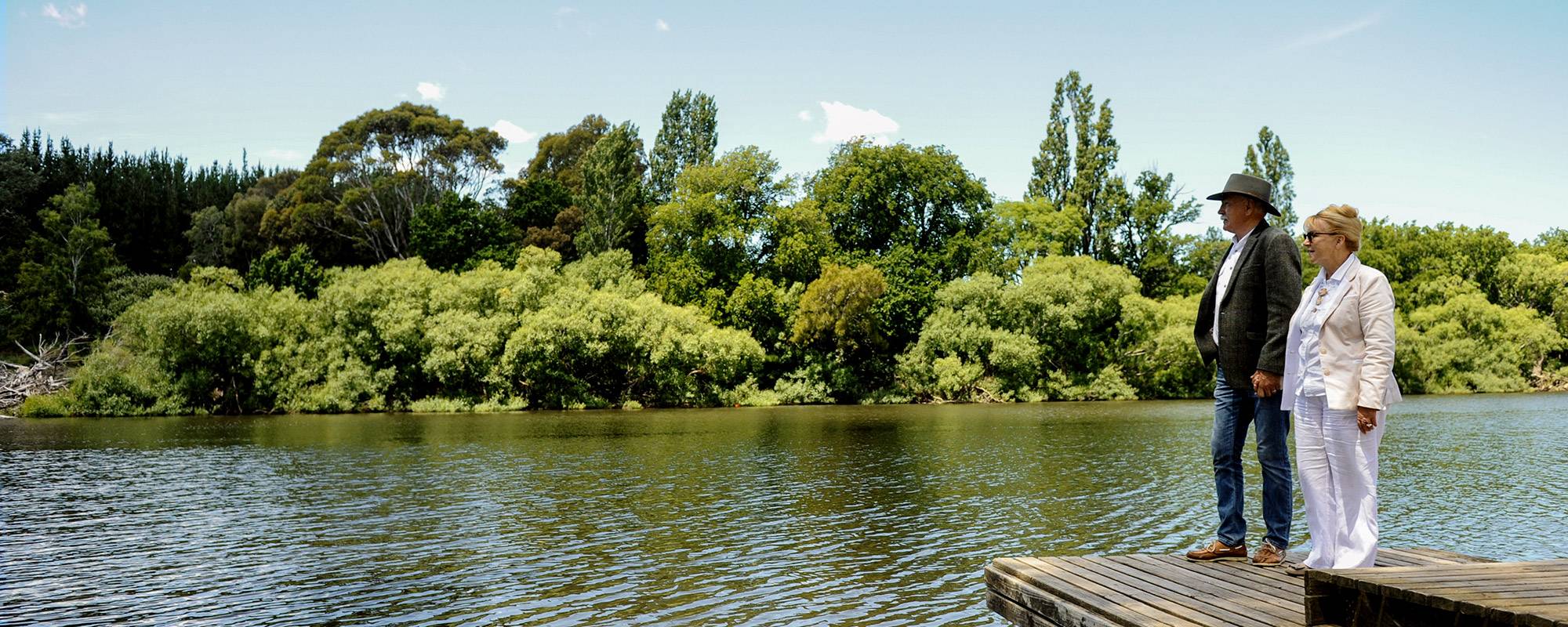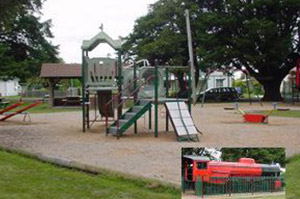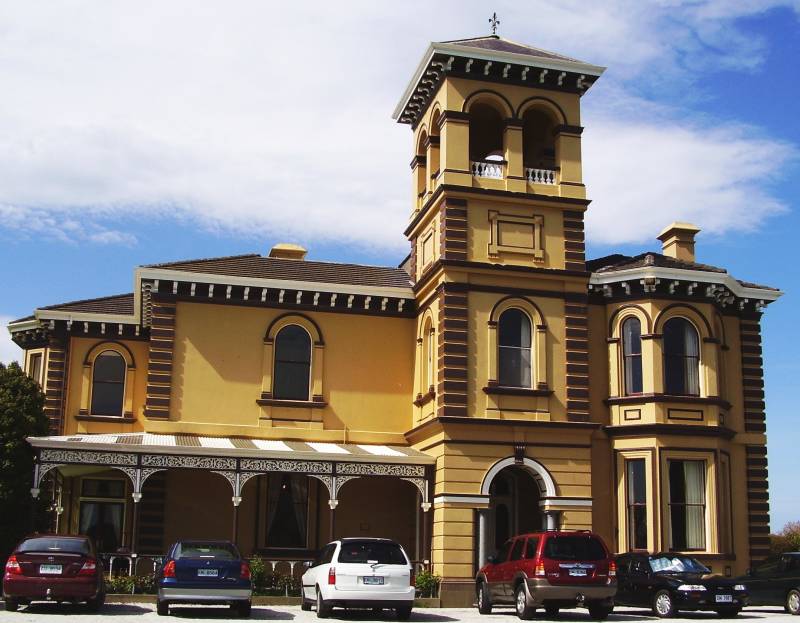
Perth is located 19 kms south of Launceston on the Midland Highway.
Perth is a National Trust classified town situated on the South Esk River. The location was selected by Governor Macquarie in 1821, and proclaimed a township in 1836.
There are a number of buildings of architectural interest including Eskleigh, the Baptist Tabernacle, and St Andrews Church. The original Perth Bridge (1836) was built by convict labour. It was subsequently destroyed by floods in 1880, and again in 1929 and 1971. It has been rebuilt on each occasion. Perth has a population of 3,933 according to the 2021 ABS Census. The South Esk River is a popular fishing and recreational spot.
Discover 8 Things to Do In Perth by following this link to the Heritage Highway website.
If you have an interest in history, the local history group have created this website: Perth Tasmania History Room.
- About Perth
- History
- Monuments, Memorials & Artworks
- Perth Bicentenary History Timeline
- Murals
- Perth's Artillery Gun BL-15
There are a number of buildings of architectural interest including Eskleigh, the Baptist Tabernacle, and St Andrews Church. The original Perth Bridge (1836) was built by convict labour. It was subsequently destroyed by floods in 1880, and again in 1929 and 1971. It has been rebuilt on each occasion. The South Esk River is a popular fishing and recreational spot.
Explore the town with a self-guided walk (available here). The walk passes 28 places Classified and 13 recorded by the national Trust as of significant historical and architectural interest. It travels a fascinating historic precinct.
Enjoy a picnic or BBQ at Lions Park, which is themed as a train station, with wooden chainsaw carved sculptures and public facilities.
The vibrant main street includes a honey factory, café, and cheese factory, as well as local shops and services.
The river reserve at Perth is an ideal spot for a picnic, and on warm days enjoy a swim in the South Esk River. Also a great place to cast a line to wild trout. Discover a bit of history at the Punt interpretation at Berryman Reserve.
For more information please visit the Heritage Highway website.
Perth Tasmania Research Room website
Perth history, stories, and photos are found Perthtas.com, a website by local historians.
The Path of History: Number Two - A Walk Through Perth
A brochure produced by the National Trust Norfolk Plains Group
As a sequel to its first brochure, which introduced Longford's historic precinct, the Norfolk Plains Group of the National Trust of Australia (Tasmania) welcomes you to a walk through the village of Perth.
Naming of Perth
The following extract is from the little book Perth and its Story by Basil W Rait. The book provides a glimpse into the history of Perth at the time of the towns 150th Anniversary celebrated in 1971.
Rait writes:
Its foundation was due to the most famous of all Governors of New South Wales, Colonel Lachlan Macquarie. He crossed the site of Perth on December 7th, 1811, when he rode out to view the land of Norfolk Plains where he had given grants to settlers from Norfolk island. Ten years later, he returned on a second tour and left Launceston for Hobart Town on May 28th 1821. On the first night he stopped at Mr David Gibson's house, Pleasant Banks (Evandale). Gibson had received this grant some years before, and had met Macquarie on an earlier occasion.
With Macquarie's party were Lieutenant Governor, Colonel William Sorell, Dr William Redfern, Australia's first medical graduate, his own son, Lieutenant Lachlan Macquarie, Surveyor General George Evans, and Judge Wylde.
It was on May 30th, 1821, that Macquarie stood on the site of the future township, near where the Perth Bridge now stands, and his journal records -
Wednesday 30th May - Sent off our baggage early this morning so as to be a stage before us, having resolved on remaining ourselves another day at Gibson's. We all took a ride this forenoon to look at the new punt now building for crossing the South Esk about 3 miles lower down the river than Gibson's. I fixed on the place for the public ferry, and also on the site of a township for this part of the country, adjoining the ferry on a very rich point of land which I have named Perth. Mr Gibson is a native of that town, having promised to build a good inn thee directly. Perth is on 14 miles for Launceston and within 3 miles of Norfolk Plains.
Perth School
In the publication The Desks Need Scrubbing - A History of Perth School, from copy books to computers, compiled by Colette Barnes, she notes:
With ever increasing population of the colony, particularly in country areas, Perth was advocated as a site for a school as early as 1826, by the Archdeacon T.H. Scott of New South Wales, during Governor Arthur's term of office.
In 1833, plans were drawn up and the building of the first Perth School, with two rooms for a master, took place. It was what was known as a King's School and was supervised by a committee in Hobart Town.
The school was situated on an allotment of land on Punt Lane ... The first school master was William Macdowell, assisted by his wife, and together they also ran the first Perth Post Office.
Follow this link to the Perth Primary School website
Eskleigh
The following information has been extracted from a brochure titled A short history of Eskleigh Home (author unknown).
Eskleigh Home at Perth, Tasmania, incorporates the old home of Mr William Gibson and his family, which was called "Scone". The land was originally granted to Captain John R Ritchie, which upon his death passed to his brother, Captain Thomas Ritchie. Mr Gibson purchased the property in 1867. After the death of Mr W Gibson senior in 1943, the property came into the possession of Mr B Gibson. Through the generosity of the family and with help and hard work from many people, the old home became "Eskleigh" for the care of severely or multiply disabled adults.
Click on this link to find out more about Eskleigh
In May 1821, Governor Macquarie stayed with his friend David Gibson at his property, Pleasant Banks, on the vast Norfolk plains. David Gibson was a pardoned convict (arrived in the First Fleet in 1804), pastoralist and acquaintance of the Governor.
The name Perth was given to this town in honour of David Gibson's home town of Perth in Scotland.
".... I fixed on the place for the public ferry and also on the site of the township ...... which I have named Perth" Governor Macquarie.
Pre 1800s
- The pannin-her clan of Aboriginal people occupied this well-grassed, timbered country with an abundance of game and fish.
1800s
- First European occupation with land grant of 'Scone' to Captain Ritchie.
- Lands used for stock, wheat, and corn.
1810s
- Free settlers from Norfolk Island relocated here and given land.
- Governor Macquarie called the area Norfolk Plains.
1820s
- Convicts constructed the road from Perth punt to Launceston.
- Areas of Perth commonly referred to as the Punt.
- A public ferry is created to replace the private ferry.
- Most of the land occupied by the Perth township had been granted to Thomas Massey. He is regarded as the pioneer of Perth.
- First flour mill constructed at Mill Hill (Flinty Creek) on Old Mill Road.
- First land grant was at 'Scone / Eskleigh'.
- Military presence from the 73rd Regiment, with Lt Lyttleton in charge.
- At this stage, Perth had eight houses, two hotels, St Andrew's Inn and Plough Inn near the punt, and the Jolly Farmer on Norfolk Street.
1830s
- The second flour mill at 'Scone' was powered by a water race from the South Esk River.
- Streets of Perth were laid out and the route of the main road between Launceston and Hobart Town was resolved.
- Leather Bottell Inn opened (two storey). It has been a Post Office, private boarding house, restaurant, antique shop and now a private home.
- "The Old Flat Iron", general store and newsagent, opened on Main Road, where the IGA now stands.
- Esk Brewery established. The site had a windmill which supplied the granary and the brewery with water, Plough Inn Hotel and several cottages too.
- There were 200 convicts at Perth Probation Station (on Native Point), building the main road and Perth bridge.
- First school (King's School), built in Punt Lane, one of the oldest in Tasmania and it was also the Post Office.
- Methodist Church (Perth Uniting Chruch) was built on the corner of Main Road and Talisker Street, using the same blue stone as the bridge for the foundations.
- Original church built (St Andrew's Anglican Church), Beulah (Rectory).
- Mr Castley established the first country coach service in Northern Tasmania.
- McKay was hung for callously murdering Wilson, a mistaken passenger on a mail cart from Launceston. He was hung and brought back to the location of the act and gibbetted for all to see, as a warning to others. The location became known as Gibbet Hill.
- Forestry Tasmania Nursery established near Esk Brewery.
- Completion of the Perth bridge over the South Esk River for the main north-south road, built by the convicts.
- First Police Station built in Scone Street. The original police cell has been moved to Fairtlough Street.
- Cricket Club formed.
1840s
- Queens Head Hotel (Perth Hotel) was main stopping place for coaches and one of the oldest licenced premises in the state to still be operating.
- Robur House was built in Georgian style. It has been a bakery, a shop, a school, and now an antique shop.
- Military and convict Probation Station abandoned.
- Perth became known as the 'Pretty Town' of Tasmania.
1850s
- Sheep farming and grain for flour sustained the town, along with brewing and tanning.
- John Wedge became a member of the first Tasmanian parliament.
- Bridge severely damaged by flood but repaired. Reduced to eight arches.
1860s
- School built in Frederick Street, started with school house in gothic revival style.
- Perth proclaimed a township.
- Queens Head visited by Duke of Edinburgh, Prince Alfred.
- Tasmanian emu becomes extinct.
- The original Scone house and mill are destroyed by floods and fire.
1870s
- First Tasmanian Railway (150 years ago) Launceston and Western Railways, wool taken to Port Launceston and shipped to Britain. Wheat and oats taken to bigger mills.
- The new Scone house was built in the Italian Villa style. It was lit by electricity produced from the old mill race and it was the first house to be lit by electricity in Australia.
- Ploughing contests with teams of horses, organised by the Ploughing Assocation.
- Perth Regatta began and held annually on the Esplanade until World War One.
- St Andrew's new church built in Fredereick Street.
1880s
- Esk Brewery closed and moved to Boag's Brewery in Launceston.
- First official Perth Post Office is built.
- Baptist Tabernacle built by William Gibson and his wife, from Native Point.
1890s
- Football and Tennis clubs were established in Perth.
- Privates A Button and J Butler were 'killed in action ' in the Boer War.
1900s
- Joseph Lyons, briefly acted as Head Teacher at Perth School. Later he returned as Prime Minister to visit Perth and the students of the school.
1920s
- Perth War Memorial unveiled.
- Rail motors were introduced for passengers on the Hobart-Launceston-Wynyard line.
- State electricity came to Perth.
- The Great Flood occurred.
1930s
- New bridge built after the Great Flood.
- New school opened on the same Frederick Street site.
- Construction of Midlands Highway.
- Perth Scout group established.
1940s
- Scone donated to Eskleigh Foundation to care for people with disabilities.
- A young scout (Gordon Bennett), drowned while attempting to save the life of another boy. This was the first Bronze Cross of Gallantry for a Scout awarded in Tasmania.
1950s
- 'Leighlands' burnt down. It was owned by John Wedge, an early explorer and surveyor.
- Perth Progress Assocation was formed and restarted the Regattas on the river.
- Perth bridge upgraded.
- Barnes' Buses operated out of Perth.
1960s
- Marie Barnes was the first female motorcycle mailman in Tasmania.
- Another flood occurred.
1970s
- Sesqui-centenary cairn erected in Perth.
- Perth Lions Club chartered and given resonsibility to develop the Train Park as a Lions Project.
- H class (H6) engine without tender placed in Perth Train Park for children to enjoy.
- Rail passenger services were ceased.
- Forestry Tasmania Nursery expanded to include historic buildings from military/ convict period (oldest military buildings in Tasmania).
- Perth Kindergarten was formed.
- River bank area developed by Perth Progress Association.
- Improvements to bridge after last flood.
- Tasmanian Honey Company opened up in Perth.
1980s
- Seinor Citizens Bowls Association formed.
- Perth Community Centre opened up.
1990s
- Northern Midlands Council created as an amalgamation of Perth, Longford, Evandale, and surorunding area.
- Current school in Fairtlough Street opens.
2000s
- Chainsaw sculptures by Eddie Freeman constructed in Train Park, in keeping with the train theme.
2010s
- Perth by-pass stage one completed.
- Adams Distillery was established in Perth, producing gin and whisky.
2020s.
- Perth by-pass completed.
- 200 years of history in Perth.
- 150 years of trains in Perth and surrounding region.
In progress - please check back soon!
Coming soon!

